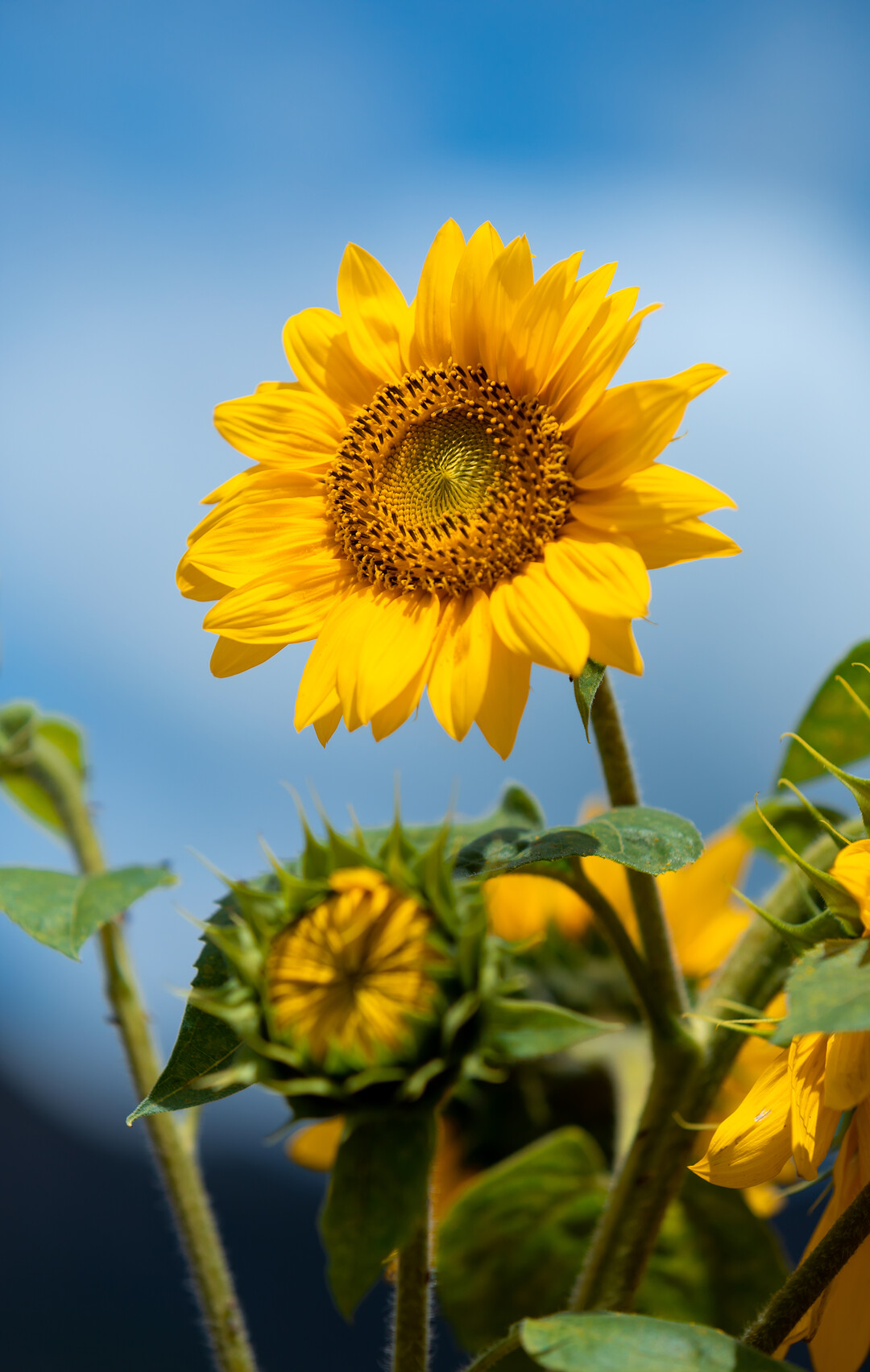Sunflowers, scientifically known as *Helianthus annuus*, are remarkable and vibrant members of the Asteraceae family, renowned for their distinctive appearance and rich cultural connotations.
Botanical Characteristics:
Sunflowers are robust, annual plants with a strong, erect stem that can reach impressive heights, often ranging from 3 to 12 feet (about 0.9 to 3.7 meters). The stem, covered in coarse hairs, provides sturdy support for the plant's growth. The large, broad leaves are alternate, ovate - shaped, and can measure up to 12 inches (30 centimeters) in length. These leaves are equipped with a network of veins that efficiently transport water and nutrients.
The most striking feature is the flower head, technically a composite flower. Each "flower" we perceive is actually an inflorescence composed of hundreds of tiny florets. The outer ray florets are sterile, with large, colorful petals (typically bright yellow, though some cultivars may have variations like orange or red - tinted edges) that act as beacons to attract pollinators. The inner disk florets are fertile, containing the reproductive organs and eventually developing into seeds. The flower head has a remarkable ability to track the sun's movement during the day, a phenomenon called heliotropism, which gradually diminishes as the flower matures and fixes its face eastward.
Cultural Significance:
In various cultures, sunflowers carry profound meanings. For Native American tribes, such as the Hopi and Apache, sunflowers were not only a source of food but also held spiritual significance, symbolizing the sun's life - giving power and representing endurance and resilience. In Greek mythology, they were associated with the story of Clytie, a nymph who pined away for the sun god Apollo, eventually transforming into a sunflower, forever gazing at him.
In modern times, sunflowers have become global emblems of positivity, hope, and loyalty. Their bright, cheerful appearance evokes feelings of happiness and optimism. They are often used in art, literature, and popular culture to convey messages of perseverance and the ability to face challenges with a sunny disposition. During difficult periods, like economic downturns or global crises, sunflower imagery has been employed to uplift spirits and inspire collective strength.
Cultivation and Uses:
Sunflowers are relatively easy to cultivate, thriving in well - drained, fertile soil and requiring ample sunlight. They are drought - tolerant to some extent, making them suitable for a variety of climates. Farmers grow them not only for their aesthetic value but also for their practical uses. The seeds are a valuable commodity, rich in healthy fats, protein, and vitamins. They can be eaten raw, roasted as a snack, or processed into sunflower oil, which is widely used in cooking for its mild flavor and high smoke point. Additionally, sunflower by - products, such as the hulls, can be utilized as livestock feed or in industrial applications like biofuel production.
In conclusion, sunflowers are far more than just visually appealing garden plants. They are a botanical wonder with a deep - rooted cultural legacy, playing diverse roles in human life—from nourishing our bodies to inspiring our souls with their sunny, unwavering presence.



